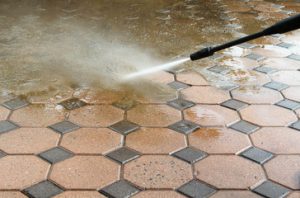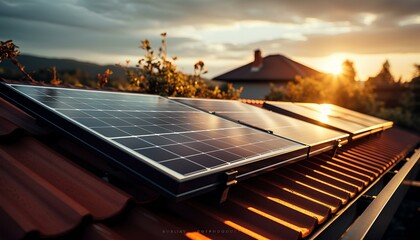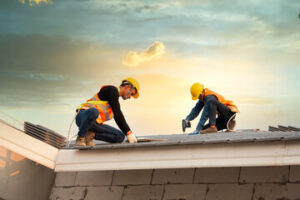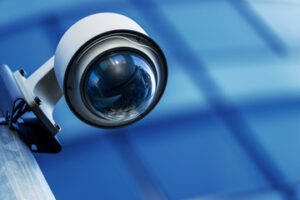Your doctor may refer you to Colorectal Surgeon Phoenix for any number of reasons. They are experts in the colon and rectum.

They use laparoscopic techniques to minimize pain and scars, and reduce recovery time. They also treat fecal incontinence and perform complex anorectal surgeries. They work closely with nationally recognized UC Davis gastroenterologists, medical oncologists and radiation oncologists to ensure a comprehensive treatment plan.
A colonoscopy lets your doctor see the inside lining of your large intestine (colon) and remove any abnormal growths (polyps). It’s a simple test but can detect early signs of bowel cancer. It’s also a good way to check whether cancer or polyps have been removed after surgery. It’s usually done to follow up on an abnormal faecal immunochemical test (FIT) result or if you have specific symptoms.
You’ll be told to stop eating and drinking for 24 hours before the test and you may need to take laxatives or use an enema. It’s important to follow the instructions as you can get dehydrated and this can cause a dangerous fall in your blood pressure, dizziness or nausea. You’ll be given painkillers and a medicine that makes you drowsy during the procedure (sedation). You’ll wear a hospital gown and will probably have paper shorts over them.
You’ll need someone to drive you home afterwards as the sedative can affect your judgement for a day or two. You can have a drink with the sedative but it’s best not to have solid food or anything that resembles red liquid, as this could confuse the camera and delay the results.
What is a sigmoid colonoscopy?
Sigmoidoscopy is a minimally invasive procedure that can diagnose conditions like rectal bleeding, changes in your bowel (pooping) habits and unexplained pain. It is also a useful screening tool for colon cancer, as it allows doctors to identify polyp formations before they become cancerous.
During the exam, your doctor will insert a flexible tube with a camera on one end—known as a sigmoidoscope—into your anus and then into your rectum and lower colon. The tube is inflated with air to make it easier for your doctor to see the tissue. If your doctor discovers polyps or other abnormal tissue, they will take a small sample for testing. You will not feel this.
Before the procedure, you will need to follow a clear-liquid diet for a day or more. You will also receive written instructions on how to prepare your colon with a specific type of bowel prep, which may include a combination of enemas and laxatives. Once you’ve finished preparing for your sigmoidoscopy, you can typically resume your regular food and activity schedule immediately. You will likely experience some discomfort or pass gas more frequently than usual, and if you notice any bleeding that lasts more than a day or you have fever or chills, contact your doctor right away.
What is a colostomy?
A colostomy is a surgical procedure that brings one end of the large colon out through an opening (called a stoma) in the abdominal wall. Stool that moves through the colon drains into a bag attached to the stoma. A colostomy can be temporary, to allow the other end of the colon to rest and heal, or permanent.
During surgery, the physician makes several small cuts in the abdomen (laparoscopic colorectal surgery) or inserts a tube through one of the incisions to look inside your colon with a camera (endocolonoscopy). The surgeon removes the part of the large colon causing the symptoms and may repair or close any tissue damage.
After surgery, your doctor will provide instructions on how to care for your stoma and stool. A stoma nurse can also help you with any questions and concerns. Recovery from a colostomy can take time, and each person heals differently. Your doctor will tell you how long to expect your recovery to last. A stoma should remain swollen and loose for awhile after surgery, but will eventually become firmer.
What is a colostomy reversal?
If you have a colostomy due to an illness, surgery or injury, it’s possible that you can get the colostomy reversed. This will reconnect your colon and close the stoma, which allows waste to pass through normally. However, this will only be possible if you’ve healed completely and your doctor is confident there’s enough healthy colon tissue to support the reversal. Developing postsurgical complications such as adhesions, strictures or an incisional hernia will also limit the likelihood of a colostomy reversal.
During a colostomy reversal, your surgeon will create a J pouch from the end of your small bowel, which is then attached to the end of your colon. A temporary ostomy, called an ileostomy, is created to allow the new join to heal. It is typically closed in a second operation a few months later.
You may experience a range of symptoms, including rectal urgency or diarrhea, as you return to normal elimination patterns. Your doctor can recommend lifestyle changes to reduce these symptoms, such as dietary modifications, incontinence products and pelvic muscle retraining (PMR) to improve sphincter strength.
What is a fecal fistula?
A fecal fistula is an opening in the stomach or intestines that allows fluid to leak out. It may cause symptoms such as diarrhea, poor absorption of nutrients or dehydration. It can also lead to skin problems and infection. Fistulas related to malignancy, irradiation or inflammatory bowel disease are less likely to close spontaneously.
Colorectal surgeons often treat conditions involving the anal canal and rectum, including anal fistulas (tunnels that develop between the inside of the anus and the outside of the skin around the anus), anal prolapses (tears in the lining of the anus or anal canal causing pain with bowel movements) and hemorrhoids. They use minimally invasive techniques to perform these procedures.
During surgery, your doctor will give you general anesthesia to put you to sleep. Once the procedure is complete, you’ll stay in a recovery room for 30 minutes to an hour. You may be able to go home, or you might need to recover on the surgical floor or in intensive care. Your surgeon will let you know what to expect ahead of time.
What is a rectal prolapse?
A rectal prolapse is when part of the rectum (the last portion of the large intestine where stool forms) slips out through the anus. It usually happens after a bowel movement. The prolapse may be internal, meaning that only the inner lining is outside of your body or external, where the whole rectum bulges out through the anus. The condition can be painful or cause bleeding, mucous discharge and incontinence. It can occur in adults of any age, but it’s most common after childbirth and as we get older, when the muscles and ligaments that support the rectum weaken.
A colorectal surgeon diagnoses a rectal prolapse by performing a physical exam and taking medical histories. They may also do a videodefecogram or anorectal manometry. These tests involve sitting on a toilet at the physician’s office and straining as if having a bowel movement to check for muscle function and reflexes of the colon, rectum and anus. They can also perform a rectal exam to evaluate the size of the prolapse. Surgery to repair the prolapse repairs the weakened anal sphincter and pelvic floor muscles. Patients often experience less pain, constipation and incontinence after this procedure.
What is a fecal fistula reversal?
Fistulas and abscesses in the colon and rectum require surgical intervention to improve patient health. Often these patients can initially benefit from medical treatment and lifestyle changes alone, but when the symptoms become severe enough, a colorectal surgeon is needed to help.
Surgery can be performed to improve a fecal fistula by draining the abscess, but it can also be used to reconnect the bowel to the abdomen. This procedure is called a colostomy, and it involves creating a hole in the abdominal wall (called a stoma) that allows stool to exit the body. A colostomy bag then attaches to the stoma to collect waste.
To perform a colostomy, your surgeon may use general anesthesia or a combination of sedation and local anesthesia. Depending on the type of procedure, you may be able to return home the same day, or you may need to stay in the hospital for several days. Be sure to follow your doctor’s instructions for eating, drinking and medications before your surgery. It’s also important to have someone else drive you to and from the surgery.
What is a rectal prolapse reversal?
Rectal prolapse occurs when the end of your colon (rectum) slips down into your anus (butthole). This may be a normal part of aging or it can happen after pregnancy, or after injury or surgery. While this isn’t a serious medical emergency, it can cause pain and problems pooping (such as incontinence or constipation).
Surgery repairs your prolapsed tissue. This can be done either through the abdomen (rectopexy) or perineally (delorme procedure). Your surgeon may also recommend a partial bowel resection at the same time to help improve bowel function.
The rectum can be repaired through abdominal surgery by sewing the anal wall to the sacrum, using either stitches or a surgical mesh. Your doctor will use either an open abdominal operation or a laparoscopic procedure, with a camera and surgical instruments placed through small incisions. The procedure will take 5 to 8 days if you have an abdominal procedure. The recovery may be a little quicker with a laparoscopic procedure, but the outcome is similar. About 95% of patients have a successful repair.



